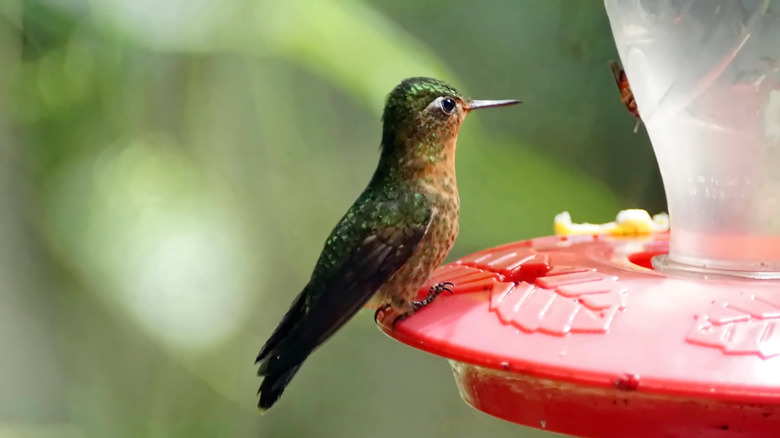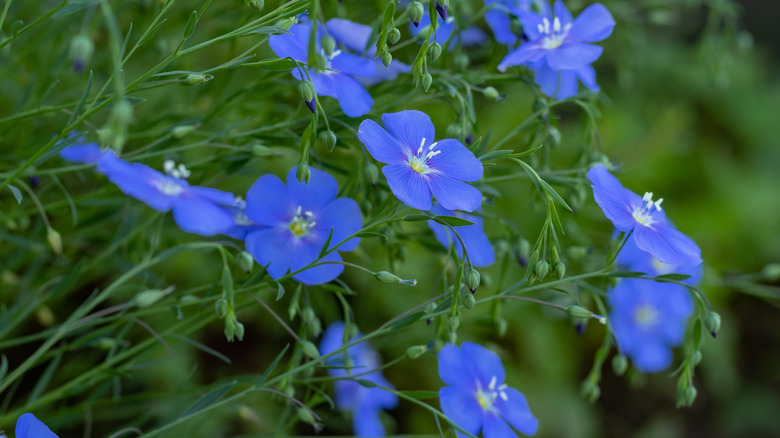The Hummingbird-Attracting Blue Flowering Plant You Can Start Indoors In Winter
We may receive a commission on purchases made from links.
The secret to a hummingbird haven in spring lies in starting blue flax (Linum perenne) indoors during the chill of winter. These drooping, delicate-looking blue flowers have a hummingbird magnet attached — their bright yellow center, which also attracts bees, moths and butterflies. Blue flax is a perennial that grows well in USDA hardiness zones 3 to 9 and blooms from May to June, each flower opening in the morning and dropping its petals by late afternoon. But don't fear — it will be replaced by new blooms the next day! This sun-worshipping plant prefers well-drained soil and will often self-seed, bringing new beauty to your garden every season. If you're trying to make your yard a hummingbird-friendly habitat, blue flax is a must-have addition that combines stunning beauty with irresistible appeal for the birds. In addition, consider planting your blue flax near other hummingbird-friendly plants to provide bountiful food for these charming feathered guests all season long.
You can get a head start on all that summer dreaminess by planting your blue flax seeds indoors, ahead of the last frost. You can use seeds you've gathered the summer before or purchase high-quality seeds, such as Outsidepride 5000 Seeds Perennial Blue Flax. By starting your blue flax indoors, you'll ensure a vibrant, early display of blooms ready to welcome hummingbirds and brighten your garden as soon as the warmer days arrive.
How to plant blue flax indoors
If you're eager to get a head start on your blue flax, start the seeds indoors six to eight weeks before your area's expected last frost. Not sure when that is? Use the zip code search at Almanac.com to find out. Once you've settled on the right timeline, gather your materials. You'll need high-quality potting soil, like Burpee Premium Organic Potting Mix, and sturdy seed cells, such as these RooTrimmer Growing Trays, to ensure your seeds get the best start. Sow the seeds over the potting soil in the tray, then place the tray in a bright, sunny place, such as a window. Keep the soil moist but not drenched, and watch your flax seeds sprout and grow.
Once sprouted, blue flax needs minimal care — consistent watering and plenty of sunlight will help the seedlings grow into magnificent blue-flowering plants. The only thing to watch for is ensuring your flax has room to grow; transfer it to a larger pot before it becomes rootbound, as late-stage root disturbance can hinder its growth. Once your sprouts reach several inches in height, they'll be ready for the next stage of their journey: being planted outdoors in your flowerbed. Blue flax works well for edging or filling a flowerbed with delicate foliage. Before long, your plants will be in full bloom, drawing hummingbirds, bees, and butterflies to your garden oasis.

